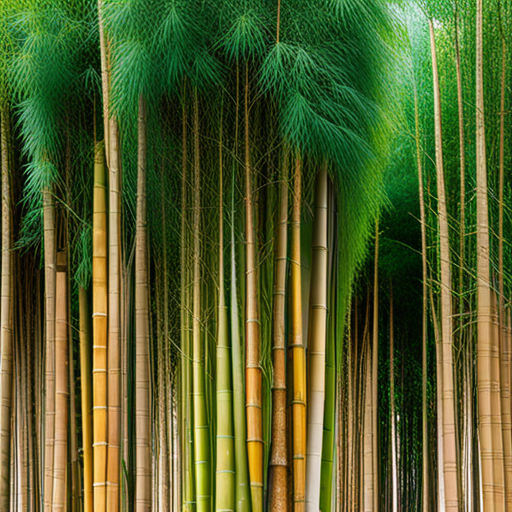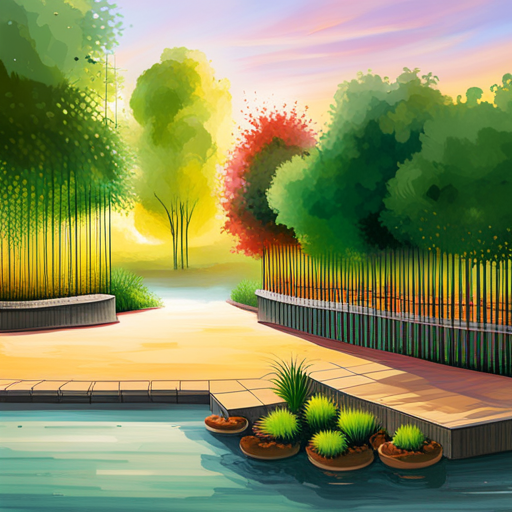Cold Hardy Bamboo: A Guide for Michigan Gardens
Cold hardy bamboo, with its remarkable adaptability and aesthetic appeal, offers an exciting opportunity for Michigan garden enthusiasts. With numerous species that can thrive in Michigan’s climate, it is possible to introduce this versatile plant into gardens located in zones 4 and 5.
This article provides a comprehensive guide on the types of cold hardy bamboo suitable for Michigan gardens, along with essential tips for successful planting and care. Additionally, it addresses the issue of managing the spread of running bamboo, which can be vigorous in growth. By following the recommended techniques and precautions, gardeners can enjoy the beauty and resilience of these bamboo varieties while ensuring their sustainable cultivation.
From selecting the ideal species to providing the necessary environmental conditions, this guide will equip Michigan gardeners with the knowledge needed to create thriving bamboo gardens in their region.
Contents
Our Highlighted Points
- There are several bamboo species that can grow in Michigan’s climate.
- Cold hardy bamboo plants can be found in zone 4 and zone 5 gardens.
- Some cold hardy bamboo species in Michigan include Red Margin, Golden Crookstem, Bissetii, Incense bamboo, Giant Leaf bamboo, Nuda (Snow bamboo), Ruscus, Solid Stem bamboo, Spectabilis bamboo, and Yellow Groove bamboo.
– When planting bamboo, it is important to choose a wind-protected spot, dig a hole twice as wide as the rootball, provide shade to newly planted bamboo for the first two weeks, water regularly in the summer, apply generous mulch in winter, and consider using a growth barrier for running bamboo.
Types of Cold Hardy Bamboo

There are several types of cold hardy bamboo that can thrive in Michigan’s climate, including Red Margin, Golden Crookstem, Bissetii, Incense, Giant Leaf, Nuda, Ruscus, Solid Stem, Spectabilis, and Yellow Groove bamboo.
These bamboo species have varying growing conditions and can be used for various landscaping ideas.
Red Margin bamboo is a fast-growing species that is hardy to zone 5 and can be used as a privacy screen or windbreak.
Golden Crookstem bamboo is cold hardy to -10 degrees F and makes a great hedge or screen.
Bissetii bamboo is resilient and can withstand zone 4 conditions, performing well in most soils.
Incense bamboo is well-suited to wetland sites and can tolerate temperatures as low as -5 degrees F.
Giant Leaf bamboo has the largest leaves of any bamboo grown in the U.S. and is hardy to zone 5.
Nuda bamboo is cold hardy to zone 4 and has small but lush leaves.
Ruscus bamboo has dense, short leaves and is hardy to zone 5.
Solid Stem bamboo thrives in wet conditions and is hardy to zone 4.
Spectabilis bamboo has attractive yellow and green striping and is hardy to zone 5.
Yellow Groove bamboo also has yellow and green striping and grows in a dense pattern.
These different types of cold hardy bamboo provide options for Michigan gardeners to incorporate bamboo into their landscapes while considering the specific growing conditions and desired landscaping ideas.
Planting and Care Tips

To successfully plant and care for bamboo in Michigan’s climate, it is recommended to choose a wind-protected location and prepare a hole that is twice as wide as the rootball. This will ensure optimal growth and protection for the plant.
Additionally, there are a few key tips to keep in mind when caring for bamboo in Michigan.
- Watering frequency: Bamboo plants require regular watering, especially during the summer months. It is important to water the plants thoroughly, making sure the soil is moist but not waterlogged. This will help the bamboo establish strong roots and thrive in its environment.
- Mulching techniques: In order to protect the bamboo’s roots during the winter months, it is important to apply a generous layer of mulch around the base of the plant. This will insulate the roots and provide protection against harsh winter conditions. It is also important to avoid raking up fallen leaves, as they can provide additional insulation for the plant and help retain moisture in the soil.
By following these planting and care tips, you can enjoy the beauty and resilience of cold hardy bamboo in your Michigan garden.
Managing the Spread of Bamboo

One effective method for controlling the spread of bamboo is by installing a growth barrier to prevent the rhizomes from spreading beyond the desired area. Bamboo containment is an important aspect of managing the growth of bamboo in Michigan gardens.
Running bamboo species, in particular, have a tendency to spread quickly and can become invasive if not properly controlled. A growth barrier, typically made of high-density polyethylene or metal, acts as a physical barrier that prevents the rhizomes from expanding beyond the designated area. The barrier should be installed at least 30 inches deep to effectively contain the bamboo’s underground root system.
Regular inspections and maintenance of the barrier are necessary to ensure its effectiveness. Additionally, regular pruning and thinning of the bamboo plants can help manage their growth and prevent overcrowding.
By implementing these containment strategies, gardeners can enjoy the beauty of bamboo without the worry of it spreading uncontrollably.
You may also like to read how to grow cold hardy bamboo varieties in Minnesota gardens.
Is Cold Hardy Bamboo Suitable for Gardens in Ohio?
Ohio’s climate can be challenging for gardening, but cold hardy bamboo for Ohio gardens offers a resilient solution. With its ability to tolerate cold temperatures, this type of bamboo thrives in Ohio’s frosty winters. Its versatility and aesthetic appeal make it a suitable choice for gardeners looking to create a unique and sustainable outdoor space in the Buckeye State.
What Cold Hardy Bamboo Varieties Are Suitable for Michigan Gardens?
When it comes to bamboo selection and care in Michigan gardens, it’s crucial to choose cold-hardy varieties. Some suitable options include Phyllostachys aureosulcata, Fargesia rufa, and Phyllostachys bissetii. These varieties can withstand the harsh winter conditions in Michigan while adding a touch of exotic beauty to your garden.
Frequently Asked Questions
Can bamboo survive in Michigan’s harsh winters?
Bamboo can survive in Michigan’s harsh winters with proper winter care. There are several suitable varieties, such as Red Margin, Golden Crookstem, Bissetii, Incense bamboo, Giant Leaf bamboo, Nuda (Snow bamboo), Ruscus, Solid Stem bamboo, Spectabilis bamboo, and Yellow Groove bamboo.
How often should I water my bamboo plants during the summer?
During the summer, it is important to water bamboo plants regularly to ensure their health and growth. While specific watering frequency can vary depending on factors such as soil moisture and weather conditions, generally, bamboo plants should be watered deeply once or twice a week.
Can I grow bamboo in a wetland area?
Wetland bamboo cultivation offers various benefits in wetland restoration. Bamboo is well-suited to wetland sites, such as a wetland area, due to its adaptability and tolerance to moist conditions.
Do I need to provide shade for newly planted bamboo?
Shade is recommended for newly planted bamboo for the first two weeks to protect against sunburn. After that, bamboo can tolerate full sun. Bamboo has a fast growth rate and can spread quickly, so it may require a growth barrier.
What is the best time of year to apply mulch for root protection?
The best time to apply mulch for root protection in cold hardy bamboo is in the winter. Mulching provides benefits such as insulation, moisture retention, and weed suppression, which help protect the roots during the harsh winter conditions. Additionally, choosing the best mulch options, such as straw or wood chips, can further enhance the protective qualities of the mulch.

